ALREADY A PAID SUBSCRIBER? SIGN IN
Life is stirring. The hazel streaming with catkin, reflected now in the stillness of the pond. The Cornus mas that I’ve staggered down the ditch are hinting at what is to come. The first flowers that you have to find amongst the branches, open a dark rich yellow. In a fortnight when they are at their peak the trees will glow gently against the backdrop of dormancy still around them. A million tiny flowers contributing to a whole. A shimmer of new life that is happy to run with whichever way February decides to go.
At ground level there is an awakening of celandines and on the warmest banks, primrose and violets. The galanthus are entering their fortnight of peak snowdrop and bolstering me in my annual efforts to extend their reach. The more there are, the further I want them to travel and as soon as their flowers dim, I will spend a couple of Sundays splitting the biggest clumps and replanting them so that the trail continues. To run along the banks of the stream and pool in eddies in the clearings and to line the lane that our fields dip into on our boundaries.

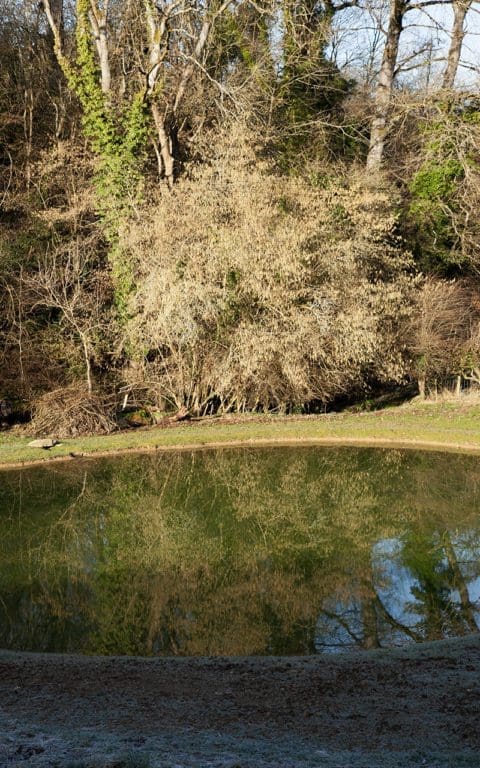
There is joy in the tide slowly turning and, as the garden has evolved, it has become clear that I need to provide for more early risers. To date, spring bulbs and early perennials have been confined to the skirts of the trees and shrubs that punctuate the perennial garden. These areas are cleared in early January whilst the new nibs of growth are still below ground and before they begin to stir, so that they can emerge uninterrupted. The open spaces, which are planted as much for the growing season as for the beauty of the winter skeletons, have a later rhythm and are left standing until the second half of February. Life is made easier in these areas for not having to tread between plants that are on an early growth cycle.
Though it would be nice to have both and a layering of the two, I have to be practical with my time. So, as part of the evolution of this place, it is time to commit to a more generous area where I can enjoy the early risers. Cardamine quinquefolia and wood anemone and drifts of hellebores and first bulbs. A planting that operates on a different timescale, with an early start that dims once the main garden picks up. Somewhere that can be cleared and ready ahead of the areas where I am still enjoying the skeletons.
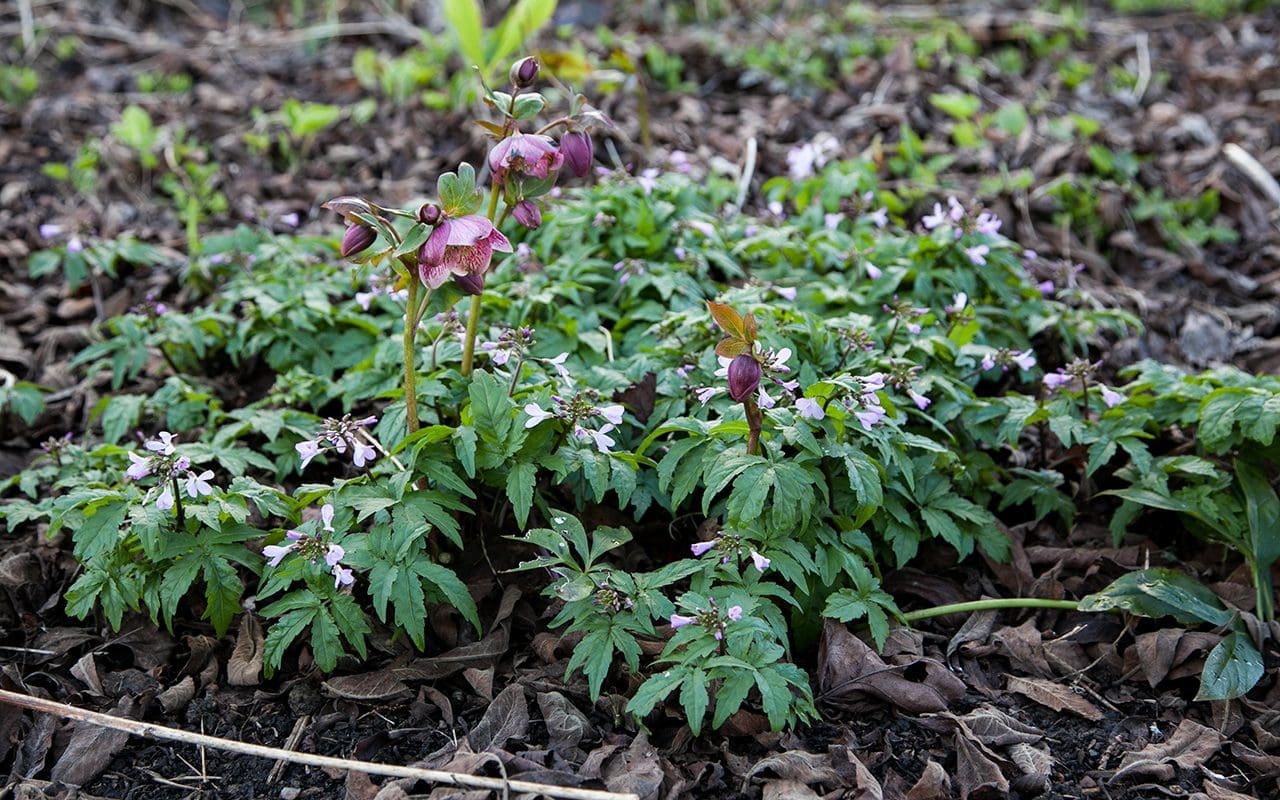
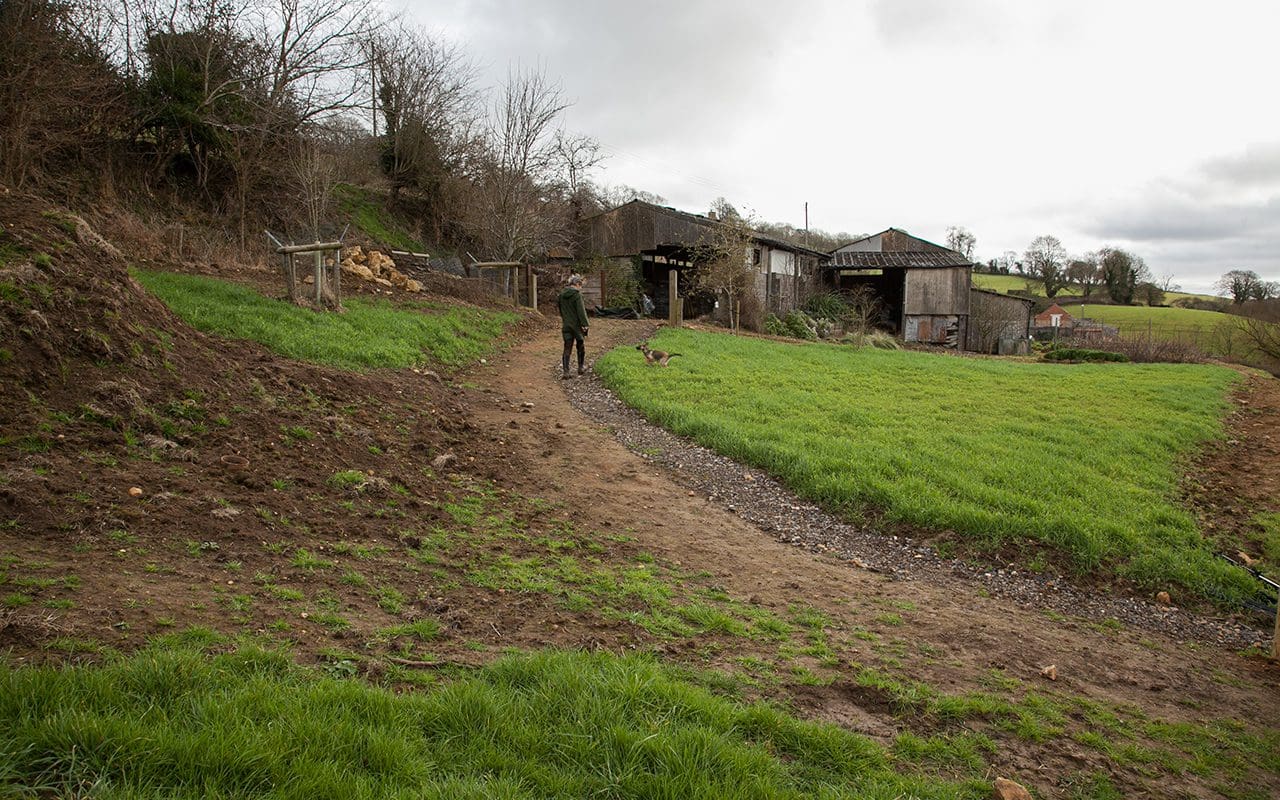
Making the pond last summer precipitated this opportunity, one creative action leading neatly to opening up another. The hole we made in the ground to provide us with a water body created a considerable pile of subsoil that had to be found a home. This was trundled up the hill where it was regraded into a new landform, extending the level we made around the barns for the kitchen garden. A curving grade to the front was massaged into the existing banks and oversown last September with a perennial wildflower mix to bind the slopes. The carefully saved topsoil from the pond was redistributed over the new plateau and sown with a winter rye and vetch green manure crop to protect the soil over the winter. In March we will rotovate this in and the new ground will be sown with annuals to allow me the time to get used to the space and mull over my next moves.
Above the new plateau, the ground rises up to meet the wild hedgerow I’ve let grow out to provide us with a bat and owl corridor above it and it is on this slope that I will make a new woodland garden. A gentle shade will be cast by a grove of Snowy Mespilus that will connect the eye to the plum orchard beyond and the underplanting will aim to provide us with an early spring garden. A garden with a different rhythm, somewhere to tidy first and enjoy whilst the rest of the garden is yet to think about coming to life. Somewhere for now and somewhere, once spring passes, that can be allowed to simply drop back into shadow like the hazel that are currently holding our attention.
Words: Dan Pearson | Photographs: Huw Morgan
Published 12 February 2022
Against the odds, the delicate Crocus tommasinianus ‘Albus’ spear the turf on the bank in front of the house. When you first become aware of their presence earlier in the month it is easy to mistake their pale tapers for the light reflecting off blades of grass, but suddenly and all at once they are free. Standing tall enough above the sward to shiver in the slightest of breezes and opening wide in a sunny interlude to reveal orange stamens, yellowed throats and nectar for the early bees.
I first grew Crocus tommasinianus in the Peckham garden and learned to love it there for being the superior cousin to the ‘Dutch’ Crocus vernus which stud front lawns in spring like spilled tins of Quality Street. I did not know it then, but I had been supplied with the true species, which has the palest silvery-lilac reverse to the petals with the colour held within. I have since repeated my orders, again and again and from different places, only to find I have planted a thousand ‘Ruby Giant’ here or two thousand ‘Whitewell Purple’ there. These darker selections are often mis-supplied and sit less lightly for their weight of saturated colour.
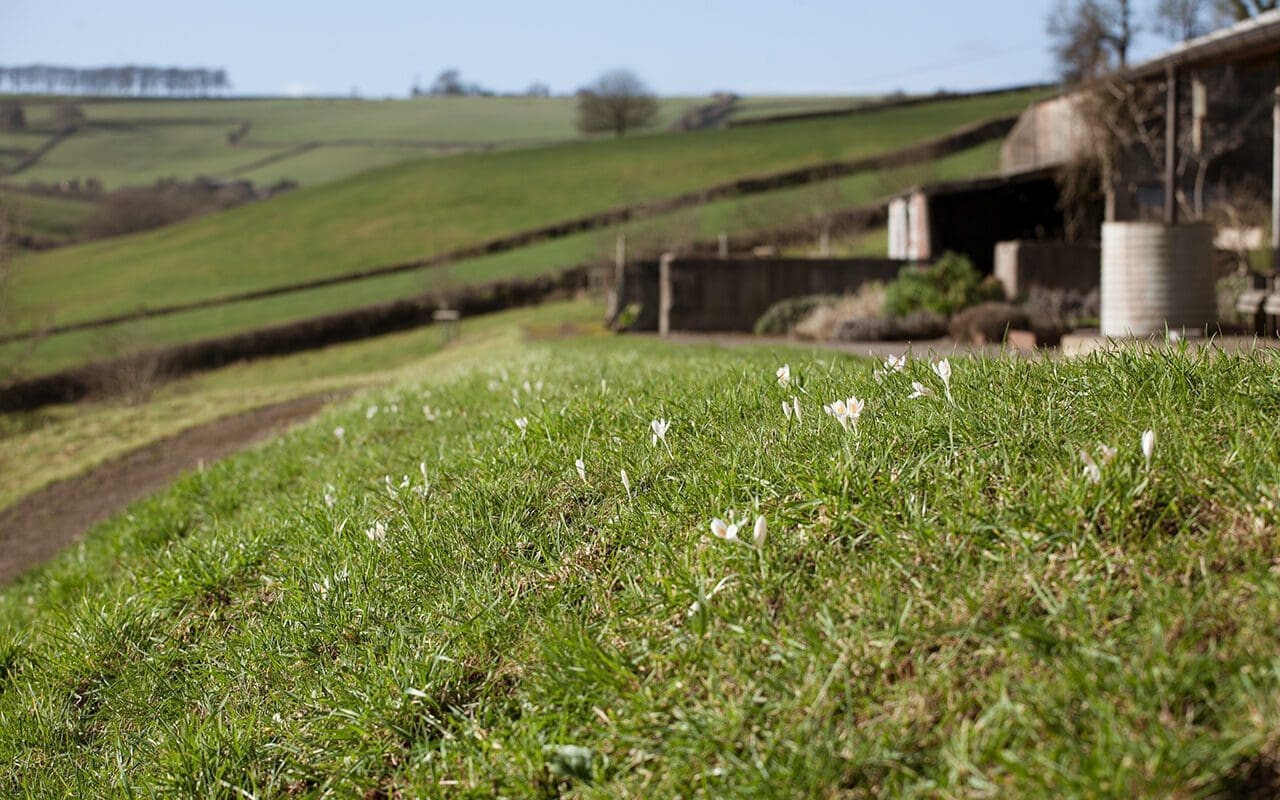
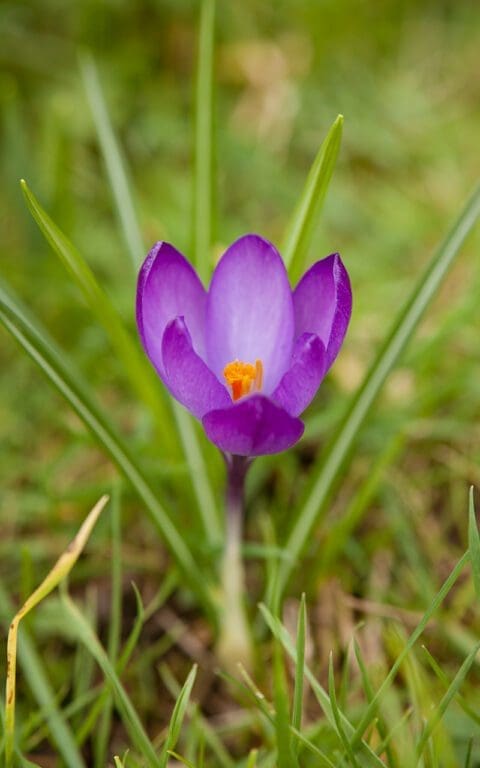
Just up the lane and making the point that they are happy there, the true form has taken over our neighbours’ garden. The sisters that live there are natural gardeners and have been tending theirs now for decades. Without competition the crocus have seeded freely, to the point of flooding the open ground of their borders, seeding into the crowns of all the plants and seizing every niche between paving stones. The garden is free and joyous and Josie and Rachel never see their occupancy as a problem.
We have struck up a friendship and Rachel has generously allowed me to dig them in-the-green immediately after flowering so that I do not have to depend upon the vagaries of the bulb suppliers. I am going to keep them out of the beds here, however, as I want to work in the garden just as they come into leaf when I’m preparing the garden for spring. The sunny banks at the back of the house are where I am hoping they will naturalise. The free-draining slope there is ideal, because they like dry ground when they are dormant and the sunshine ensures that their flowers, which are light sensitive, open to reveal their interiors. When they do, you feel your heart lift and the long dark winter retreat.
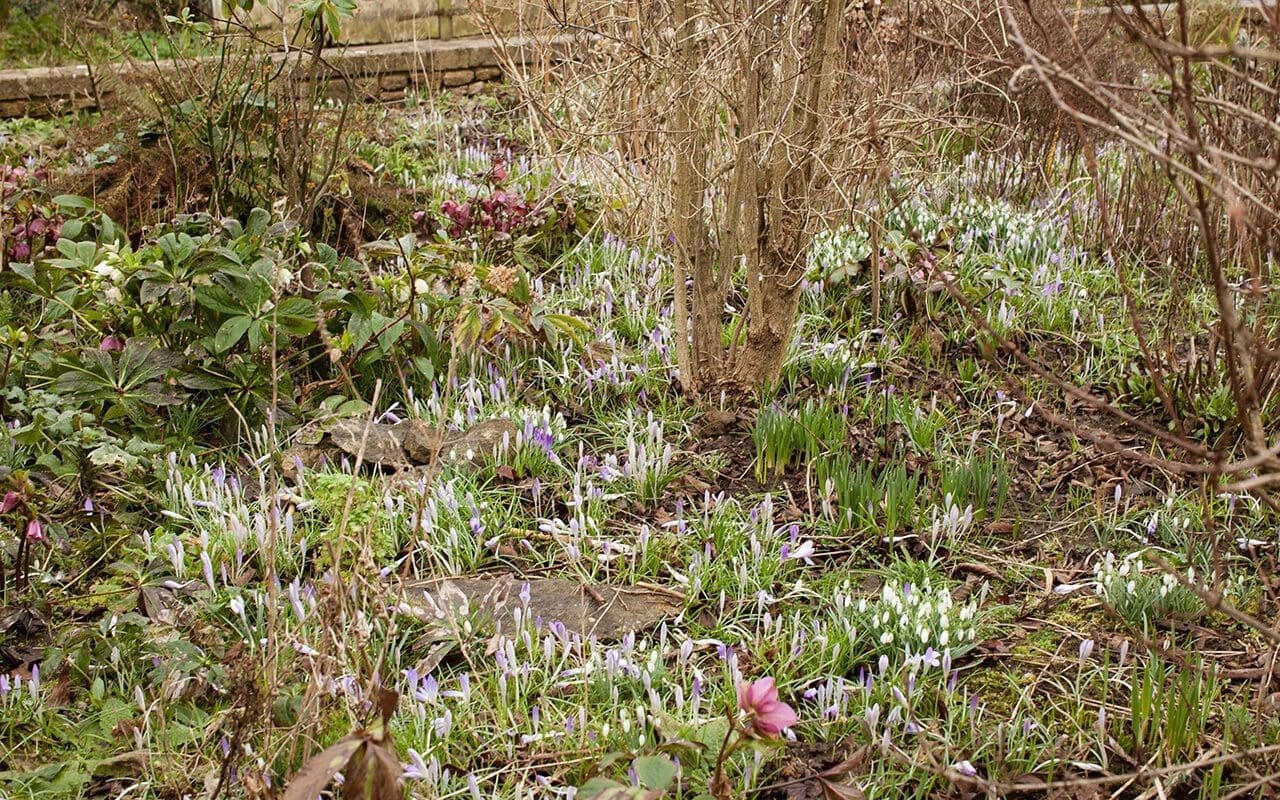
I can already see from their behaviour in the grass under the young crab apples that they will not seed as freely as they have in the open ground of Josie and Rachel’s garden. Though happy in grass, the lushness of our meadows is probably too much for the young seedlings to take a hold. I hope in time, and once the grass thins as the crab apples assert themselves, that they will take to a lighter sward and begin to make the place their own. This is worth waiting for and every year I am adding a few more with Narcissus jonquilla and Anemone blanda to follow after their early blaze is over.
Shipton Bulbs stock a number of special selections that are subtler than the named varieties above. The rosy Crocus tommasinianus ‘Roseus’ (main image) and C. t. ‘Pictus’ which looks as though the tips of the petals have been dipped in ink. The white form, Crocus tommasinianus ‘Albus’, is very choice and, as they do not come as cheap, I ordered a couple of handfuls and gave them their own place on on the bank at the front of the house in the hope that they will not cross with the others at the back. The position here is exposed to our winds that whip across the open ground, but they stand bravely and mark the shift in the season with the snowdrops and the promise of what lies just around the corner.
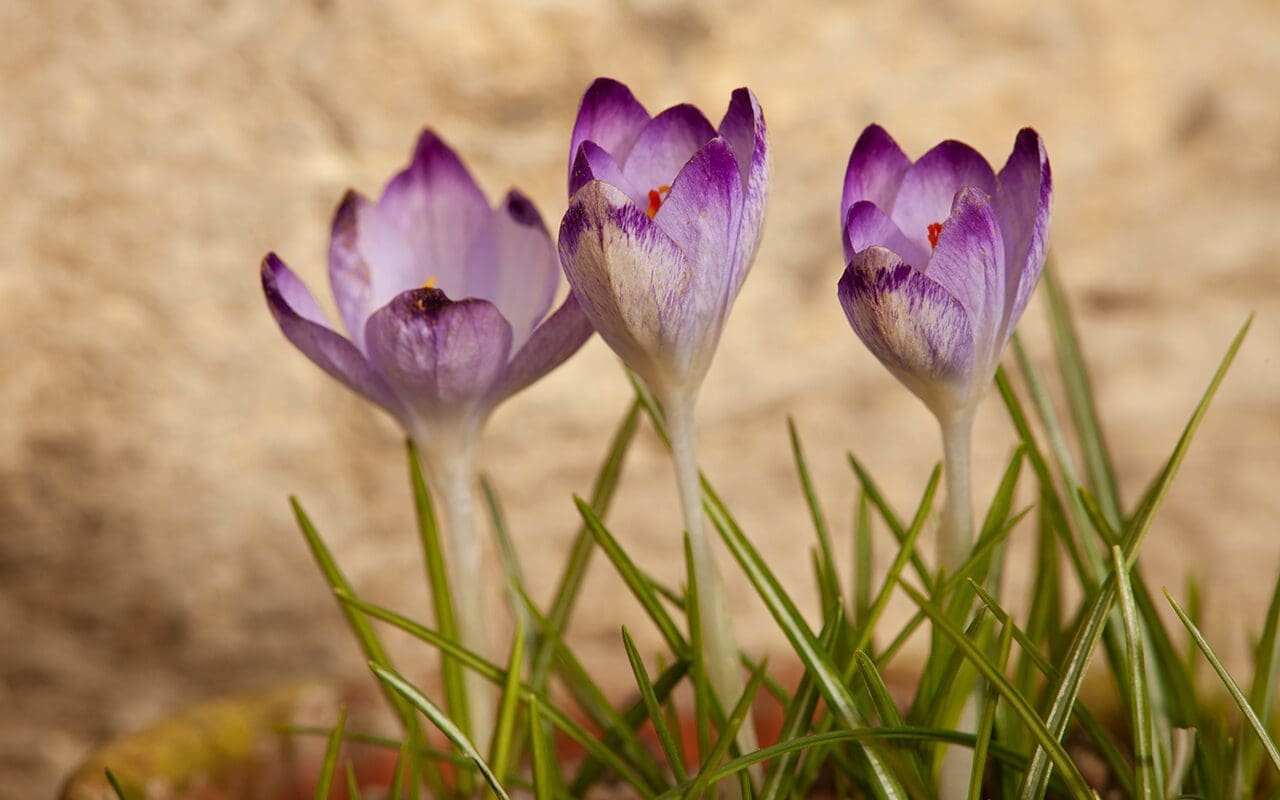
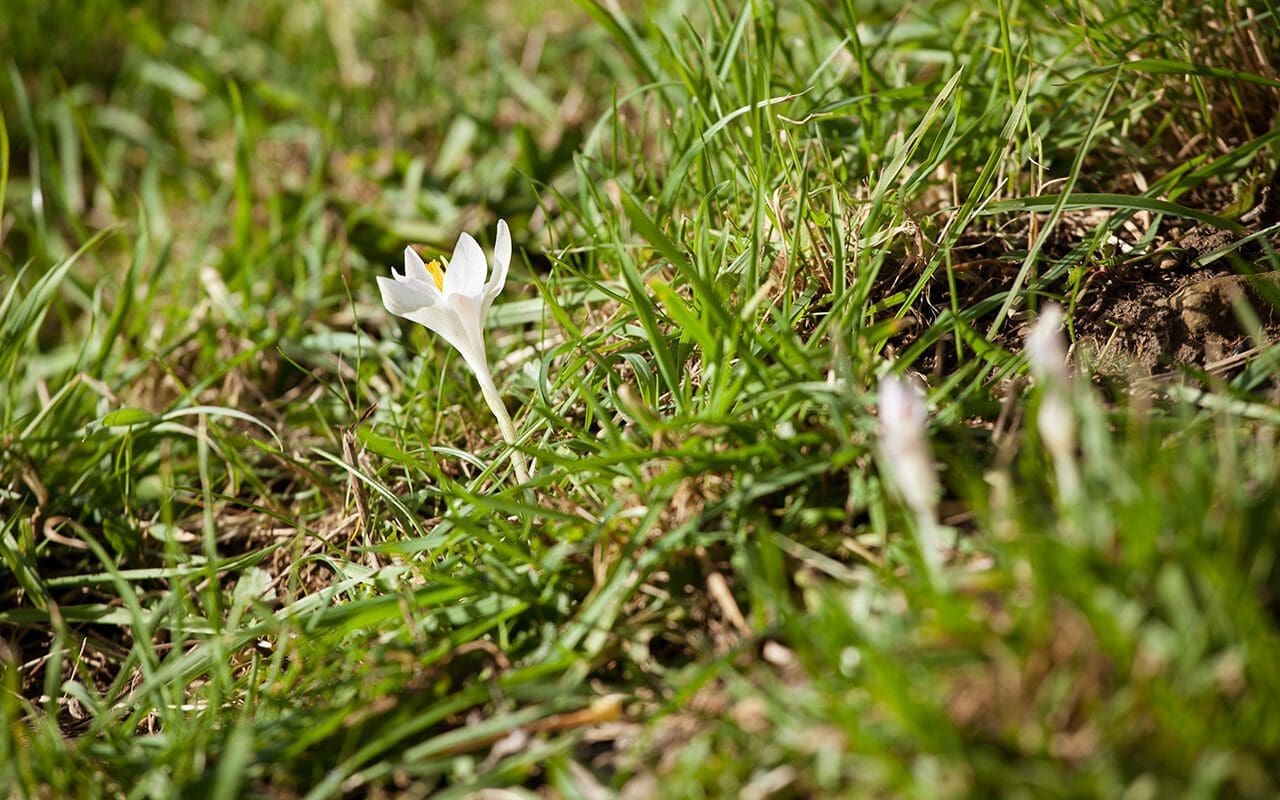
Words: Dan Pearson | Photographs: Huw Morgan
Published 20 February 2021
We are sorry but the page you are looking for does not exist. You could return to the homepage